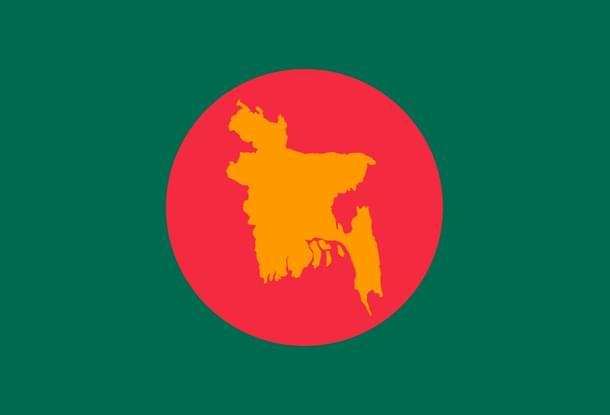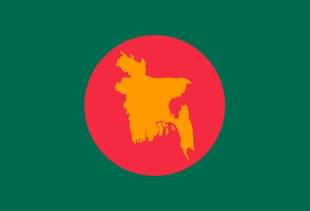Ideas
Why India Must Focus On A Two-State Solution For Bangladeshi Hindus
R Jagannathan
Dec 09, 2024, 12:41 PM | Updated Dec 13, 2024, 05:59 PM IST
Save & read from anywhere!
Bookmark stories for easy access on any device or the Swarajya app.


India’s Foreign Secretary Vikram Misri is in Dhaka today (9 December 2024) to rescue the India-Bangladesh relationship to the greatest possible extent. Touhid Hossain, Bangladesh's foreign affairs advisor in the army-backed Mohammad Yunus dispensation, has expressed optimism that the relationship can be put on an even keel through talks and diplomacy.
This despite his government’s failure to stop the attacks on Hindus, cancellation of bandwidth transmission through Bangladesh to India’s north-east, and chumming up with Pakistan once again. Talks cannot undo whatever actions have already followed the ouster of the Sheikh Hasina government on 5 August.
The fundamental problem with Bangladesh today — and even under Sheikh Hasina despite an improved state-to-state relationship — is the nature of its Islamic society. Very few Islamic societies, even those that may formally remain ‘secular,’ can tolerate minorities. They thus work towards their gradual elimination, as seen in our neighbourhood and elsewhere. This makes single-state secular cohabitation nearly impossible for non-Muslims.
This low tolerance for non-Muslims exists independently of the state or its constitution. There is no other explanation for why the Hindu population, which was more than 33 per cent in East Bengal at the start of the 20th century, dropped to 22 per cent after partition and is now under eight per cent. Even during the Hasina years, it fell by 1–1.5 per cent.
Hindus in Bangladesh are headed for oblivion regardless of what Misri manages to negotiate during his trip.
There is actually only one way to safeguard the 13.1 million Hindus in Bangladesh, short of bringing them all back to India. The two-nation theory is more relevant in Bangladesh than anywhere else, and India must work towards realising it. Either one of the following two options is what we must work for.
One, if Hindus are to remain within a united Bangladesh, they should be able to self-govern in autonomous zones where they can control the further erosion of their numbers.
Two, since the Bangladesh government may not agree, Hindus must be encouraged to steadily move towards the divisions bordering India and resettle there, where India can then protect them militarily.
The problem currently is that Bangladesh’s 13.1 million Hindus are so widely dispersed within the eight main divisions of Bangladesh that they do not form a viable minority anywhere. It is only in the Rangpur (north-west Bangladesh), Khulna (south-west) and Sylhet (northeast) divisions bordering India that their numbers cross 10 per cent. Elsewhere, including in the capital city of Dhaka, they are far below that level. Hindus with such low levels of concentration in Bangladeshi divisions are essentially roadkill for Islamists. Higher concentrations above 20 per cent exist only in five of Bangladesh’s 64 districts: Gopalganj, Khulna, Dinajpur, Thakurgaon and Maulvibazar.
Since ham-handed army action will only make things worse for Hindus in Bangladesh and, in any case, cannot lead to a win for India if there is a hostile Muslim population to deal with, comparisons with 1971 — when there was internal support for the Indian army to liberate Bangladesh — are inapplicable.
What India should plan and campaign for — both covertly and overtly — is to move as many Hindus as possible to the divisions bordering India so that they can be strengthened and later protected.
The three divisions that can be logically targeted for separation from Bangladesh are Rangpur (which is close to India’s Chicken’s Neck region and hence strategically important to us too), Sylhet, and Khulna.
Hopefully, Dhaka’s 2.7 million Hindus, the largest single block but constituting just 6.26 per cent of the city’s population, can either be asked to move to the border regions or even to India under an expanded Citizenship Amendment Act, where all Hindus have the right to return to India.
Now that the inherent hostility of Islamic society to non-Muslims is very clear, India must accept a two-nation solution for Bangladesh where a part of the territory is sliced off — through a political agreement or by force — to settle the Hindus of Bangladesh.
As Afghanistan, Pakistan and Bangladesh have demonstrated, Islam has no place for non-Muslims. They have to be given their own territory to govern. This has to be India’s medium to long-term objective to help Bangladesh’s Hindus.
Jagannathan is former Editorial Director, Swarajya. He tweets at @TheJaggi.





